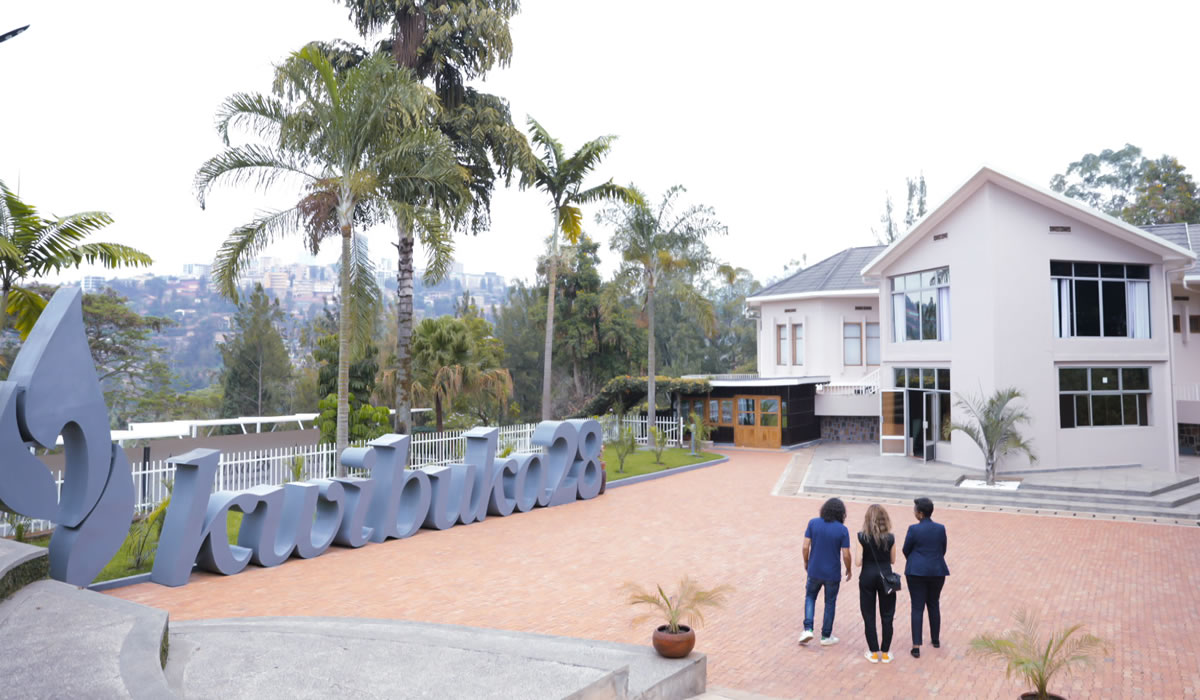Visiting the Kigali Genocide Memorial is a deeply moving and essential experience for anyone traveling to Rwanda. Located in the capital city of Kigali, the memorial serves as the final resting place for over 250,000 victims of the 1994 Genocide against the Tutsi, and it stands today not only as a place of remembrance but also as a center for education, reconciliation, and peacebuilding. For visitors seeking to understand Rwanda’s past and the resilience of its people, a visit to the memorial is a poignant journey into the heart of one of the most tragic yet transformative chapters in recent human history.
This comprehensive article provides an in-depth exploration of the Kigali Genocide Memorial, including its history, significance, what to expect during a visit, key exhibits, educational programs, and its role in Rwanda’s post-genocide healing process. It also includes practical information for visitors, including location, opening hours, entrance fees, and travel tips.

Historical Background: The 1994 Genocide Against the Tutsi
To fully appreciate the significance of the Kigali Genocide Memorial, it is important to understand the historical context. In April 1994, following decades of ethnic tension and propaganda, the assassination of Rwandan President Juvénal Habyarimana triggered a mass slaughter that would claim the lives of more than 800,000 people in just 100 days. The genocide was predominantly carried out by extremist Hutu militias against the Tutsi minority and moderate Hutus who opposed the regime.
The genocide was marked by extreme brutality: entire communities were wiped out, families were destroyed, and widespread rape and torture were used as weapons. Churches, schools, and even hospitals became sites of mass killings. While the world largely stood by, Rwanda descended into one of the most horrifying human rights catastrophes of the 20th century.
In the aftermath, Rwanda embarked on a remarkable journey of recovery, reconciliation, and unity. The Kigali Genocide Memorial was established to honor the victims, document the events, and serve as a learning center to prevent future atrocities.
Establishment of the Kigali Genocide Memorial
The Kigali Genocide Memorial was officially opened in April 2004, on the 10th anniversary of the genocide. It was created through a partnership between the Kigali City Council and the Aegis Trust, a UK-based organization committed to preventing crimes against humanity. The memorial was designed as a place for mourning and reflection but also as an educational tool for both Rwandans and international visitors.
The site was chosen due to its significance; mass graves at the location contain the remains of more than 250,000 genocide victims. These graves continue to receive bodies that are discovered through ongoing exhumations across the country.
The design of the memorial integrates simplicity with solemnity. The gardens, the eternal flame, the wall of names, and the interior exhibits together create a space that honors the dead while challenging the living to build a more compassionate world.
What to Expect During a Visit
The Kigali Genocide Memorial offers a structured and emotionally powerful visitor experience. Visitors are greeted by beautifully maintained gardens and a peaceful atmosphere, which stands in stark contrast to the heavy subject matter inside.
The memorial is divided into three main permanent exhibitions:
- The Genocide Against the Tutsi
- The History of Genocidal Violence Worldwide
- The Children’s Room
Each section is rich in detail and presented through a combination of multimedia displays, photographs, text panels, survivor testimonies, and recovered artifacts.
-
The Genocide Against the Tutsi
This is the main and most extensive exhibit. It traces the history of ethnic divisions in Rwanda, rooted in colonial manipulation by the Belgians, which categorized Rwandans as Hutu, Tutsi, or Twa. The exhibit explains how these divisions were institutionalized and manipulated for political gain, culminating in the planned extermination of the Tutsi population.
Through chilling testimonies, graphic imagery, and historical documentation, this section walks visitors through the events leading up to the genocide, the systematic nature of the killings, and the international community’s failure to intervene. The exhibit does not shy away from the horrors, it confronts them head-on, ensuring that the truth is neither sanitized nor forgotten.
-
Global Genocides Exhibit
This section offers a broader perspective by examining other genocides throughout history, including the Holocaust, the Cambodian genocide, the Armenian genocide, and atrocities in the Balkans. It draws connections between different genocides and emphasizes the importance of global vigilance, remembrance, and prevention. By showcasing common patterns propaganda, dehumanization, denial, and indifference the exhibit reinforces the urgent need to learn from the past.
-
The Children’s Room
Perhaps the most heart-wrenching area of the memorial, the Children’s Room is a tribute to the youngest victims of the genocide. Through portraits, personal stories, and everyday details favorite foods, hobbies, last words visitors are introduced to children who were murdered simply because of their ethnicity. This section humanizes the staggering statistics and reminds visitors of the individual lives lost.
The Mass Graves and Wall of Names
Outside the main exhibition building are several large concrete slabs that mark the mass graves of genocide victims. Flowers and wreaths are often placed here by mourners, families, and dignitaries. Visitors are encouraged to pay their respects in silence.
Adjacent to the graves is the Wall of Names, a memorial wall inscribed with the names of victims. Although many names are still missing, efforts continue to identify and document those who perished. The wall is a powerful testament to the individuals behind the numbers and the need to preserve memory.
Educational Programs and Community Engagement
Beyond remembrance, the Kigali Genocide Memorial is an active center for peace education. The memorial works closely with schools, universities, and community organizations to promote values of tolerance, empathy, and responsible citizenship. Programs include:
- Youth Peace Ambassadors: Training young Rwandans to become advocates for peace and conflict prevention.
- Teacher Training Workshops: Equipping educators with the tools to teach about genocide, prejudice, and human rights.
- Dialogue and Reconciliation Events: Creating spaces for survivors, perpetrators, and community members to engage in healing conversations.
The memorial also collaborates with international partners to share Rwanda’s lessons with the world and contribute to global genocide prevention efforts.
Visitor Information
Location: Gisozi, Kigali (about 10 minutes from Kigali city center)
Opening Hours:
- Monday to Sunday: 8:00 AM to 5:00 PM
- Closed on public holidays, including April 7 (Kwibuka), Rwanda’s official genocide commemoration day
Entrance Fees:
- Entry to the memorial is free for Rwandan citizens.
- For international visitors, there is a suggested donation of USD 25 which includes an audio guide. This donation helps support the maintenance of the site and its educational programs.
Guided Tours:
- Self-guided tours with audio devices are available in several languages.
- Group and private guided tours can be arranged in advance.
- Visitors are advised to allocate 2 to 3 hours for a comprehensive experience.
Rules and Etiquette:
- Dress respectfully.
- Photography is permitted in some areas but not in others.
- Silence is encouraged, particularly in the mass grave area.
- Children under 12 are generally not recommended due to the content.
Emotional Impact and Reflection
A visit to the Kigali Genocide Memorial can be emotionally overwhelming. It confronts visitors with humanity at its worst and, simultaneously, with the resilience and strength of the Rwandan people. Many visitors report feeling a mix of sorrow, anger, and hope. It is not a “tourist attraction” in the conventional sense, but rather a pilgrimage of conscience a place that challenges one’s understanding of justice, morality, and the human condition.
The memorial encourages visitors to reflect on their own responsibilities in building inclusive societies and preventing hatred in their communities.
Rwanda Today: From Tragedy to Transformation
What makes the Kigali Genocide Memorial even more impactful is the contrast with modern Rwanda. Today, Rwanda is one of Africa’s fastest-growing economies, known for its safety, cleanliness, gender equality, and strong national identity. Ethnic labels are no longer recognized, and a unified Rwandan identity has emerged from the ashes of division.
The country’s transformation is a testament to the power of reconciliation and visionary leadership. While challenges remain, Rwanda’s story is one of hope and determination, and the memorial is a key piece in understanding that journey.
Visiting the Kigali Genocide Memorial is an essential and transformative part of any trip to Rwanda. It offers a profound understanding of the 1994 Genocide against the Tutsi, honors the memory of the victims, and stands as a beacon for peace and humanity. The experience is intense, emotional, and unforgettable but also necessary.
As visitors leave the memorial, many carry with them not only grief for the lives lost but also admiration for the strength of a nation that chose unity over vengeance, healing over hatred. The Kigali Genocide Memorial challenges us all to confront the darkness of our history and to commit ourselves to building a more just and compassionate world.
In Rwanda, the past is not forgotten but it is transformed into a foundation for peace.

